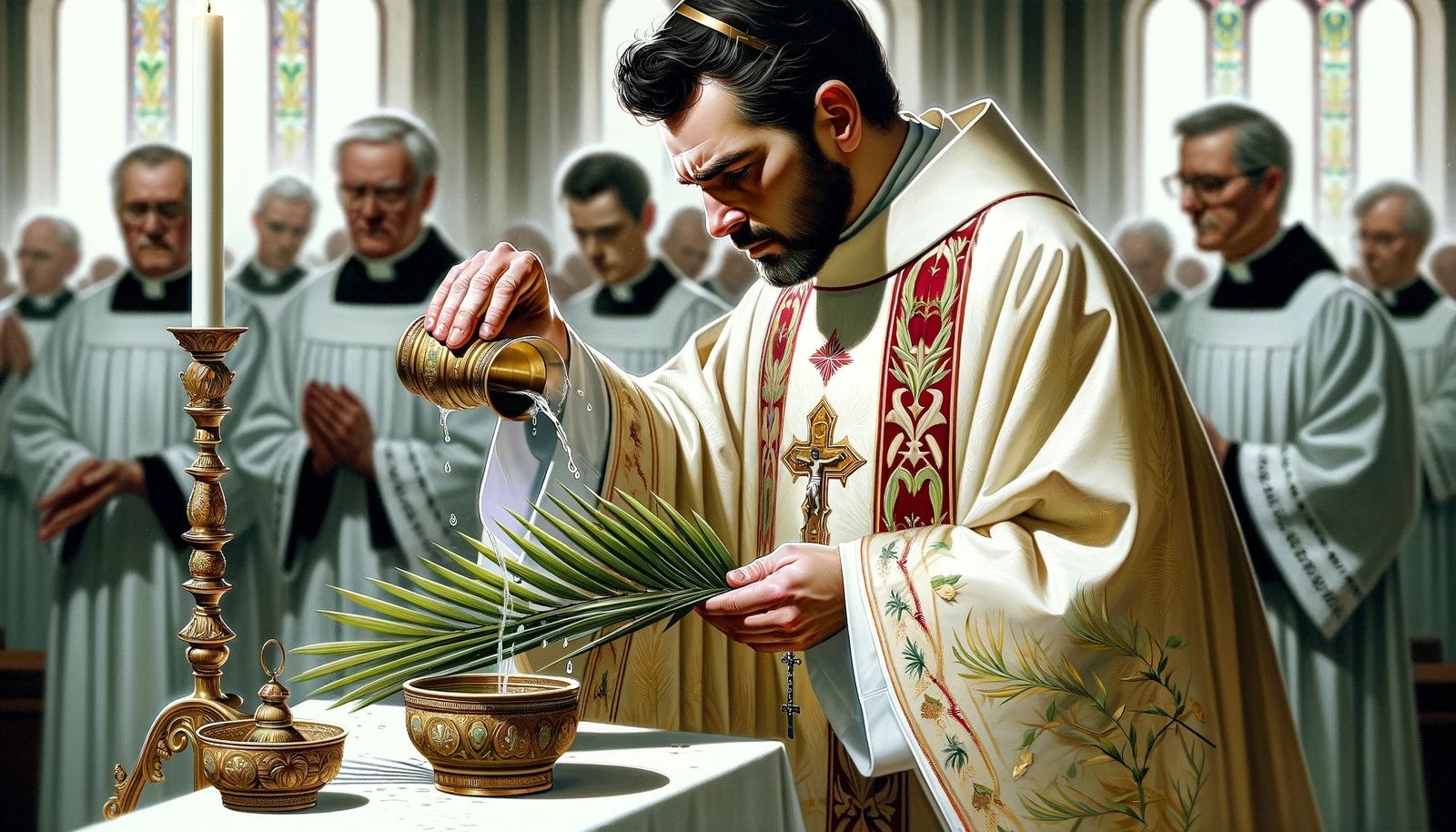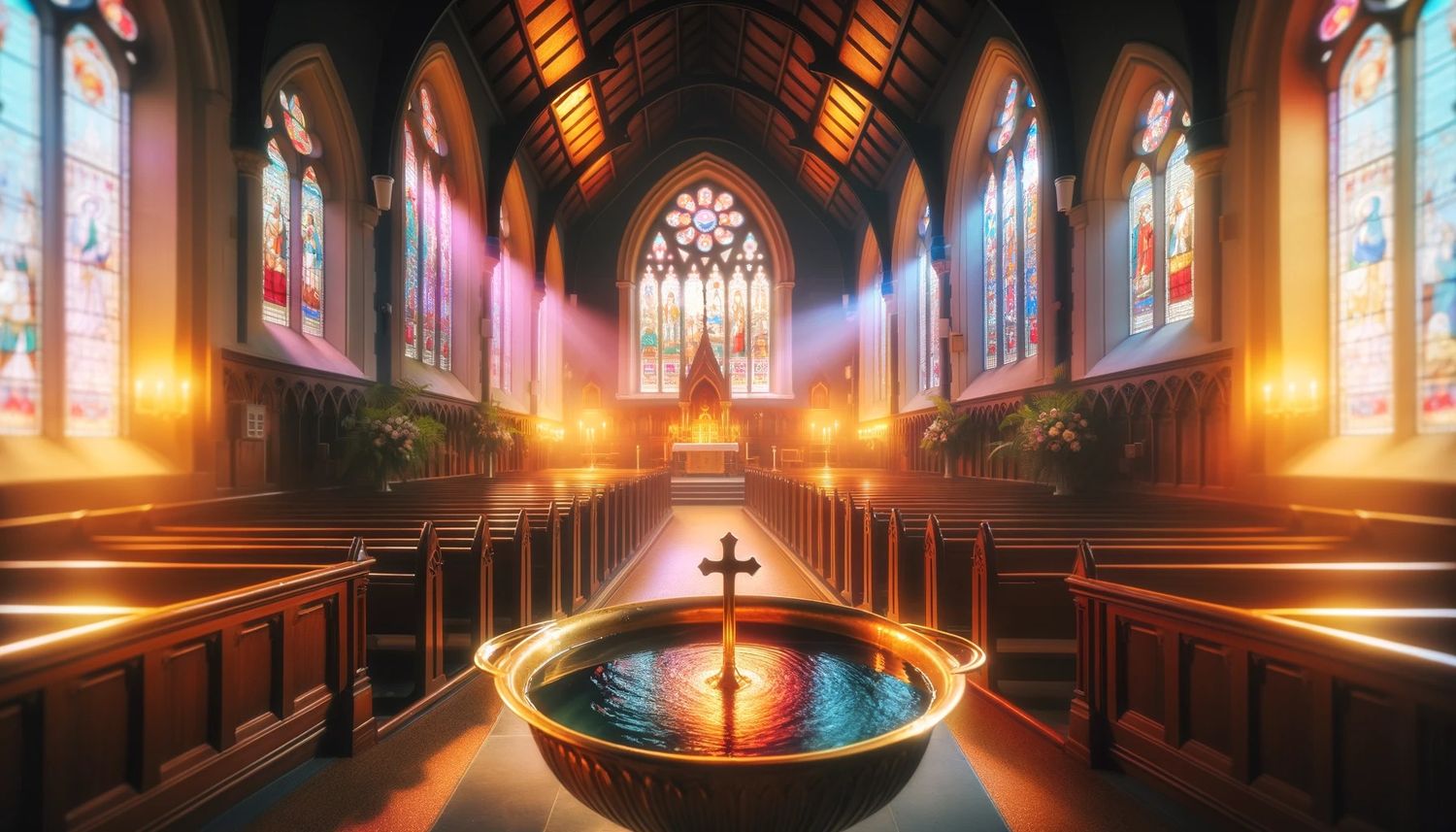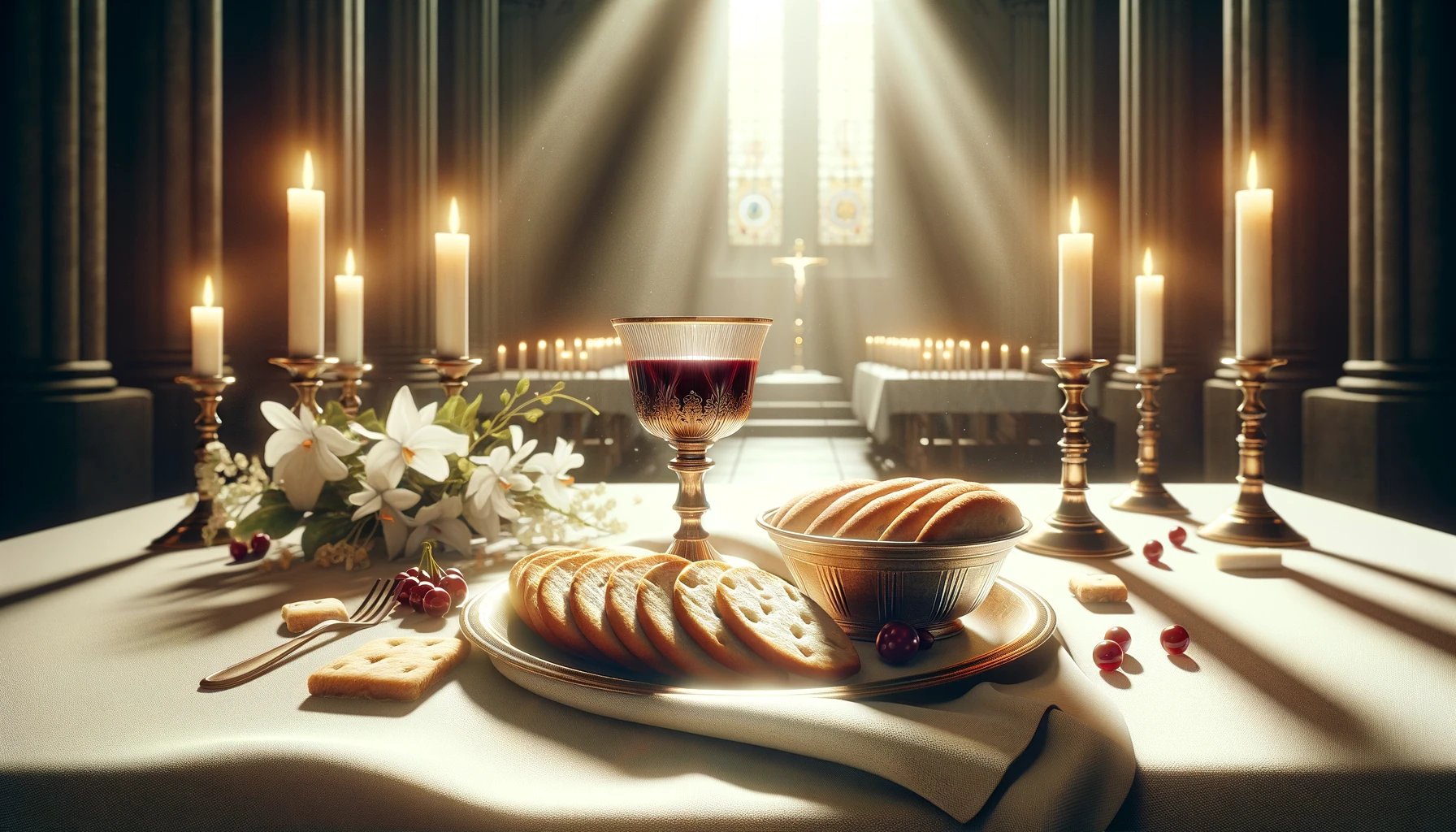Home>Theology and Spirituality>What Does The Cross Represent In Catholicism


Theology and Spirituality
What Does The Cross Represent In Catholicism
Published: February 18, 2024
Peter Smith, Editorial Director at Christian.net, combines deep insights into faith, politics, and culture to lead content creation that resonates widely. Awarded for his contributions to religious discourse, he previously headed a major organization for religious communicators, enhancing dialogue on faith's societal impacts.
Discover the significance of the cross in Catholic theology and spirituality. Explore its representation and meaning in the Catholic faith.
(Many of the links in this article redirect to a specific reviewed product. Your purchase of these products through affiliate links helps to generate commission for Christian.net, at no extra cost. Learn more)
Table of Contents
Introduction
The cross is one of the most widely recognized symbols in the world, and its significance in Catholicism is profound. It represents the central theme of the Christian faith – the crucifixion and resurrection of Jesus Christ. The image of the cross evokes a range of emotions and thoughts, from solemn reflection to profound gratitude and hope. In Catholicism, the cross holds a sacred place in the hearts of believers, serving as a powerful reminder of the ultimate sacrifice made by Jesus for the redemption of humanity.
The symbol of the cross has transcended time and culture, carrying deep spiritual and theological meanings. Its vertical beam symbolizes the divine, reaching from earth to heaven, while the horizontal beam represents the connection between God and humanity. This intersection signifies the pivotal moment in history when God's love and mercy intersected with human sin and suffering, offering the promise of salvation and eternal life.
Throughout the centuries, the cross has been depicted in various forms, from simple wooden crosses to ornate and intricate designs adorning cathedrals and religious artifacts. Each representation serves as a visual testament to the enduring impact of Christ's sacrifice and the unwavering faith of the Catholic community.
As we delve into the symbolism, rituals, and sacraments associated with the cross in Catholicism, it becomes evident that this iconic symbol is not merely an object of veneration but a profound embodiment of the Catholic faith. It is a symbol that transcends physical form, resonating deeply within the hearts and minds of believers, and serving as a constant source of inspiration and spiritual strength.
The significance of the cross in Catholicism extends far beyond its physical representation; it is a symbol that encapsulates the essence of the Christian message – love, sacrifice, redemption, and the promise of eternal life. In the following sections, we will explore the multifaceted symbolism of the cross in Catholicism, delving into its role in rituals, sacraments, and as a sign of salvation.
The Symbolism of the Cross in Catholicism
The cross holds profound symbolism within the Catholic faith, representing the core tenets of Christian belief. At its essence, the cross embodies the sacrificial love of Jesus Christ, who willingly endured crucifixion to atone for the sins of humanity. This act of selflessness and redemption lies at the heart of Catholic theology, shaping the spiritual identity of the faithful.
The vertical beam of the cross points upward, symbolizing the divine realm and the transcendent nature of God. It serves as a reminder of the heavenly realm and the eternal promise of salvation. In contrast, the horizontal beam extends outward, representing the earthly realm and the interconnectedness of humanity. This intersection of the vertical and horizontal beams signifies the pivotal moment in history when God's love intersected with human suffering, offering the hope of redemption and reconciliation.
Moreover, the cross serves as a tangible reminder of Christ's triumph over sin and death. Through his crucifixion and subsequent resurrection, Jesus conquered the forces of darkness, offering believers the assurance of eternal life. The cross, therefore, becomes a symbol of victory and hope, inspiring believers to persevere in the face of adversity and to embrace the promise of spiritual renewal.
In Catholicism, the cross also embodies the concept of solidarity with the suffering. It serves as a poignant reminder of Christ's compassion for the afflicted and marginalized, calling upon believers to emulate his love and mercy in their interactions with others. The image of the crucified Christ on the cross evokes a deep sense of empathy and compassion, urging believers to extend kindness and support to those in need.
Furthermore, the cross symbolizes the unifying force of the Christian community. It serves as a focal point for collective worship and reflection, drawing believers together in shared reverence and devotion. The act of venerating the cross during religious services reinforces the communal bond among the faithful, fostering a sense of unity and spiritual solidarity.
In essence, the symbolism of the cross in Catholicism encompasses themes of love, sacrifice, redemption, and communal solidarity. It serves as a powerful visual representation of the foundational beliefs of the Christian faith, inspiring believers to embrace the transformative message of Christ's enduring love and the promise of eternal salvation.
The Crucifix vs. the Cross
In Catholicism, the distinction between the crucifix and the cross holds significant theological and symbolic implications. The crucifix, adorned with the figure of the crucified Christ, serves as a potent visual representation of the suffering and sacrifice of Jesus. It stands as a poignant reminder of the profound love and redemptive mission of Christ, encapsulating the central narrative of the Christian faith. The presence of the corpus, or body of Christ, on the crucifix serves as a visceral depiction of the crucifixion, evoking deep emotions of empathy, gratitude, and reverence among believers.
On the other hand, the plain cross, devoid of the corpus, symbolizes the triumph of Christ's resurrection and the promise of eternal life. While the crucifix emphasizes the sacrificial aspect of Christ's crucifixion, the empty cross serves as a powerful symbol of hope and victory over sin and death. It embodies the transformative message of Christ's resurrection, signifying the fulfillment of God's redemptive plan and the assurance of salvation for humanity.
The theological significance of these symbols is reflected in their use within Catholic rituals and devotional practices. The crucifix holds a central place in Catholic liturgy, adorning altars, chapels, and religious artifacts, serving as a focal point for contemplation and prayer. Its presence during the liturgy serves to immerse believers in the profound mystery of Christ's sacrifice and to evoke a deep sense of spiritual introspection and gratitude.
Conversely, the plain cross, often displayed in Catholic churches and homes, serves as a powerful emblem of faith and hope. Its unadorned form underscores the transformative impact of Christ's resurrection, inspiring believers to embrace the promise of new life and spiritual renewal. The empty cross symbolizes the triumph of light over darkness, inviting believers to reflect on the enduring message of hope and redemption inherent in the Christian narrative.
In essence, the crucifix and the cross represent complementary aspects of the Christian faith, encapsulating the dual themes of Christ's sacrificial love and triumphant resurrection. Both symbols serve as potent reminders of the foundational beliefs of Catholicism, inviting believers to contemplate the depth of Christ's love and the transformative power of his redemptive mission. Whether adorned with the corpus or standing empty, the crucifix and the cross stand as enduring symbols of faith, love, and hope within the Catholic tradition.
The Cross in Catholic Rituals and Sacraments
The cross holds a central and revered position in Catholic rituals and sacraments, serving as a focal point for worship, reflection, and spiritual communion. Its presence permeates every aspect of Catholic liturgy, infusing these sacred rites with profound symbolism and theological significance.
In the context of Catholic rituals, the cross plays a pivotal role in the celebration of the Eucharist, also known as the Holy Mass. The processional cross, often adorned with intricate designs and symbols, is ceremoniously carried into the church at the beginning of the Mass, signifying the presence of Christ among the faithful. This solemn procession, accompanied by reverent hymns and prayers, underscores the centrality of the cross in uniting the congregation in collective worship and devotion.
Furthermore, the act of veneration of the cross during the liturgical services, such as Good Friday, embodies a profound expression of reverence and gratitude for Christ's sacrificial love. The faithful approach the cross, often adorned with flowers and draped in rich fabrics, to kiss or touch it as a gesture of homage and adoration. This ritual of veneration serves as a poignant reminder of Christ's redemptive sacrifice and invites believers to contemplate the depth of his love and the transformative power of his crucifixion.
In the sacramental life of the Catholic Church, the cross holds a prominent place in the celebration of the sacraments, particularly in the rites of Baptism, Confirmation, and Holy Matrimony. During the sacrament of Baptism, the sign of the cross is made on the forehead of the baptized, symbolizing their incorporation into the Christian faith and their initiation into the community of believers. This act of marking the cross serves as a visible sign of the individual's commitment to Christ and their embrace of the Christian identity.
Similarly, in the sacrament of Confirmation, the confirmands are anointed with the sign of the cross, invoking the presence of the Holy Spirit and affirming their commitment to the Christian faith. The cross becomes a tangible symbol of spiritual empowerment and fortitude, marking the confirmands' journey toward deeper communion with the divine and their active participation in the life of the Church.
Moreover, in the sacrament of Holy Matrimony, the exchange of vows and rings often incorporates the sign of the cross, symbolizing the couple's commitment to Christ-centered love and their mutual support in living out their faith. The presence of the cross in this sacred union underscores the spiritual dimension of marriage and serves as a reminder of the enduring love and grace that emanate from the crucified Christ.
In essence, the cross permeates the rich tapestry of Catholic rituals and sacraments, infusing these sacred rites with profound meaning and spiritual depth. Its presence serves as a powerful reminder of Christ's redemptive love and the transformative impact of his sacrifice, inviting believers to embrace the enduring message of hope, salvation, and spiritual renewal.
The Cross as a Sign of Salvation
The cross stands as a profound symbol of salvation within the Catholic faith, encapsulating the redemptive narrative at the core of Christian belief. At its essence, the cross represents the pivotal moment in history when God's love intersected with human suffering, offering the promise of salvation and eternal life. This iconic symbol serves as a potent reminder of Christ's sacrificial love and the transformative power of his crucifixion, embodying the hope and redemption that lie at the heart of the Christian message.
The concept of salvation, intricately woven into the symbolism of the cross, holds deep theological significance for Catholics. The crucifixion of Jesus Christ on the cross represents the ultimate act of atonement, wherein his selfless sacrifice serves as the means of reconciling humanity with God. Through his crucifixion, Christ bore the burden of human sin, offering a path to redemption and spiritual renewal. The image of the crucified Christ on the cross serves as a poignant reminder of the depth of God's love and the extent to which he was willing to go to offer salvation to humanity.
Furthermore, the cross symbolizes the triumph of light over darkness, signifying the victory of Christ over sin and death. His resurrection from the dead, following his crucifixion, serves as a testament to the promise of new life and the assurance of eternal salvation for believers. The cross, therefore, becomes a powerful emblem of hope, inspiring believers to embrace the transformative message of Christ's enduring love and the promise of redemption.
In the Catholic tradition, the cross as a sign of salvation extends beyond its visual representation to permeate the spiritual consciousness of believers. It serves as a focal point for contemplation and prayer, inviting individuals to reflect on the profound implications of Christ's sacrifice and the promise of salvation it embodies. The act of venerating the cross during religious services becomes a tangible expression of gratitude for the gift of salvation and a recommitment to living out the Christian faith.
Moreover, the cross as a sign of salvation underscores the universal invitation to embrace God's redemptive love. It transcends cultural and societal boundaries, offering the promise of salvation to all who turn to Christ in faith. The inclusive nature of the cross as a symbol of salvation reflects the boundless mercy and grace of God, inviting believers to partake in the transformative power of Christ's sacrifice.
In essence, the cross stands as a powerful and enduring sign of salvation within Catholicism, embodying the redemptive love of Christ and offering believers the promise of eternal life. Its symbolism resonates deeply within the hearts and minds of the faithful, serving as a constant source of inspiration and spiritual reassurance. The cross, as a sign of salvation, encapsulates the profound depth of God's love and the enduring hope it offers to all who embrace the Christian faith.
Read more: What Color Represents Catholicism
Conclusion
In conclusion, the cross holds a sacred and multifaceted significance within Catholicism, embodying the core tenets of the Christian faith and serving as a powerful symbol of love, sacrifice, and redemption. Its profound symbolism permeates every aspect of Catholic theology, rituals, and sacraments, inviting believers to contemplate the depth of Christ's love and the transformative power of his redemptive mission.
The symbolism of the cross in Catholicism extends beyond its physical representation, resonating deeply within the hearts and minds of the faithful. It serves as a potent reminder of Christ's sacrificial love, offering believers the assurance of salvation and the promise of eternal life. The cross, whether in the form of the crucifix or the plain cross, embodies the dual themes of Christ's suffering and triumphant resurrection, inviting believers to embrace the transformative message of hope and spiritual renewal.
Furthermore, the cross serves as a focal point for collective worship and reflection, fostering a sense of communal solidarity and spiritual communion among the faithful. Its presence in Catholic rituals and sacraments underscores the centrality of Christ's redemptive love, inviting believers to participate in the enduring narrative of salvation and grace.
The significance of the cross in Catholicism transcends cultural and societal boundaries, offering the promise of salvation to all who turn to Christ in faith. It stands as a universal symbol of God's boundless mercy and love, inviting believers to partake in the transformative power of Christ's sacrifice and to embrace the enduring hope it offers.
In essence, the cross in Catholicism represents the intersection of divine love and human suffering, offering believers a tangible expression of God's redemptive plan. Its enduring symbolism serves as a constant source of inspiration and spiritual reassurance, inviting believers to embrace the transformative message of Christ's enduring love and the promise of eternal salvation. As the faithful venerate the cross and reflect on its profound significance, they are reminded of the enduring truth that salvation and hope are found in the sacrificial love of Christ, symbolized by the cross.














